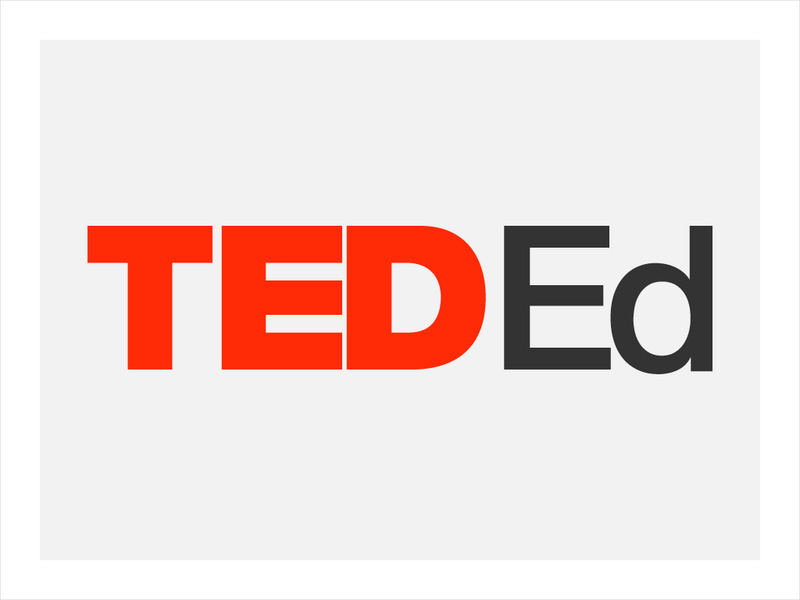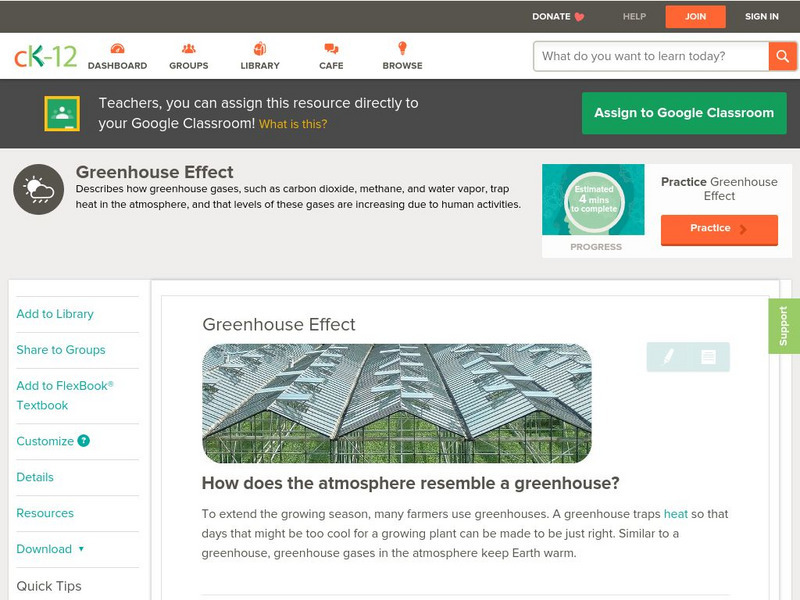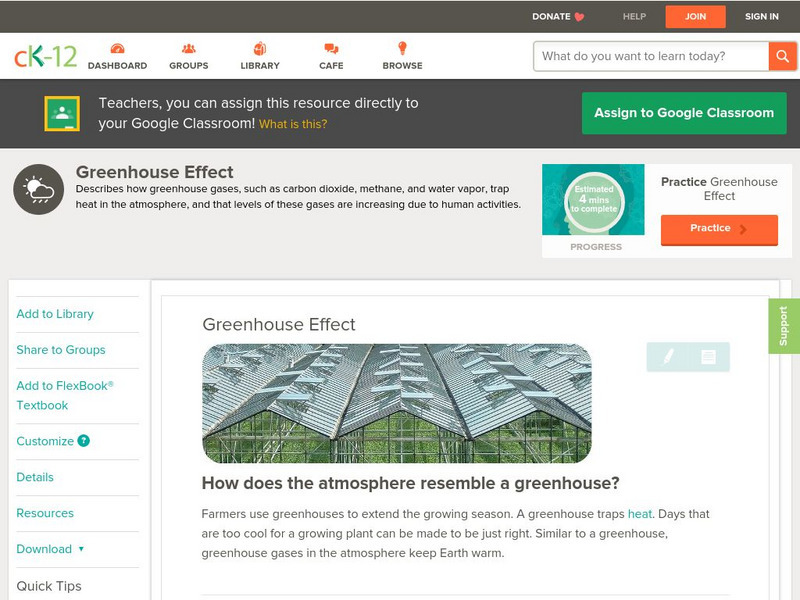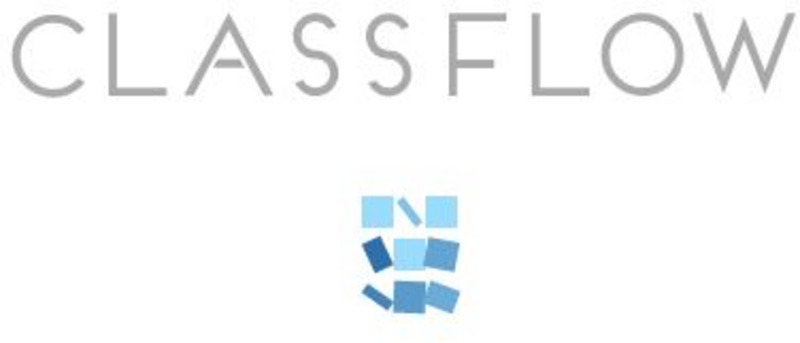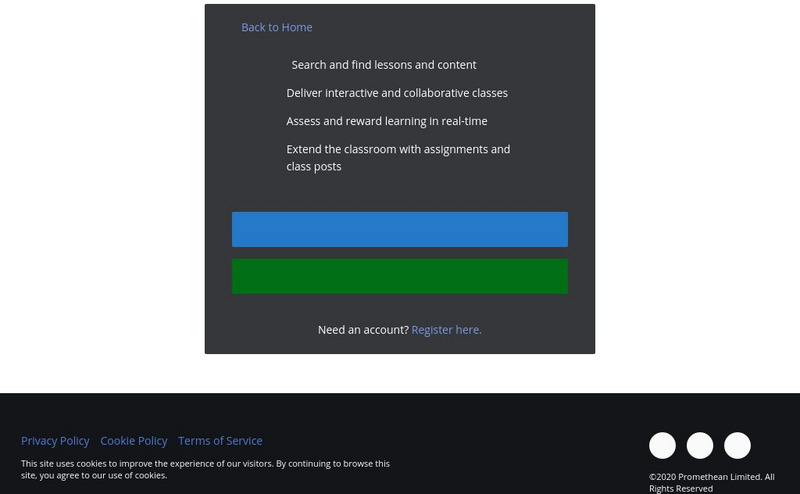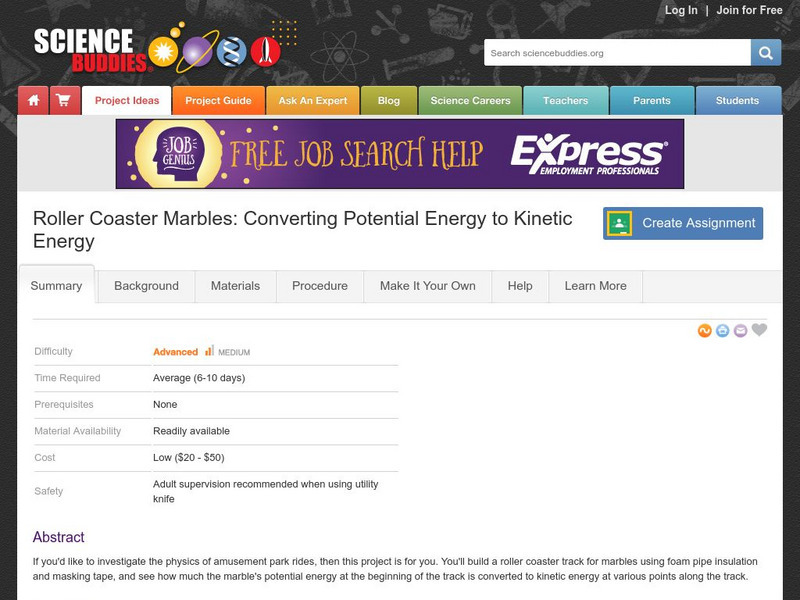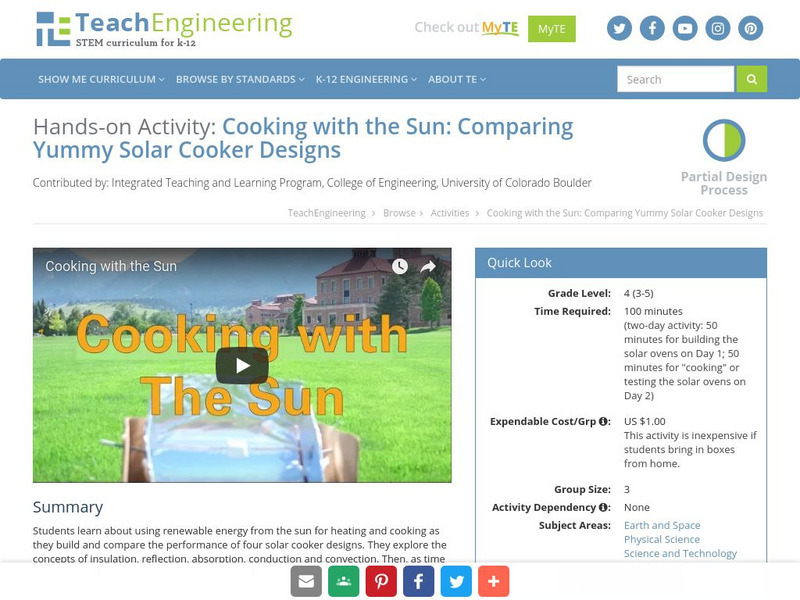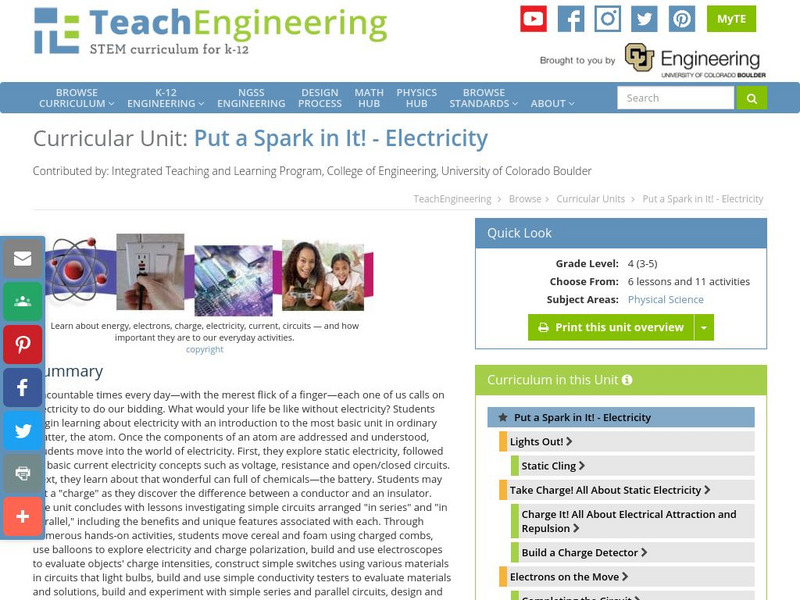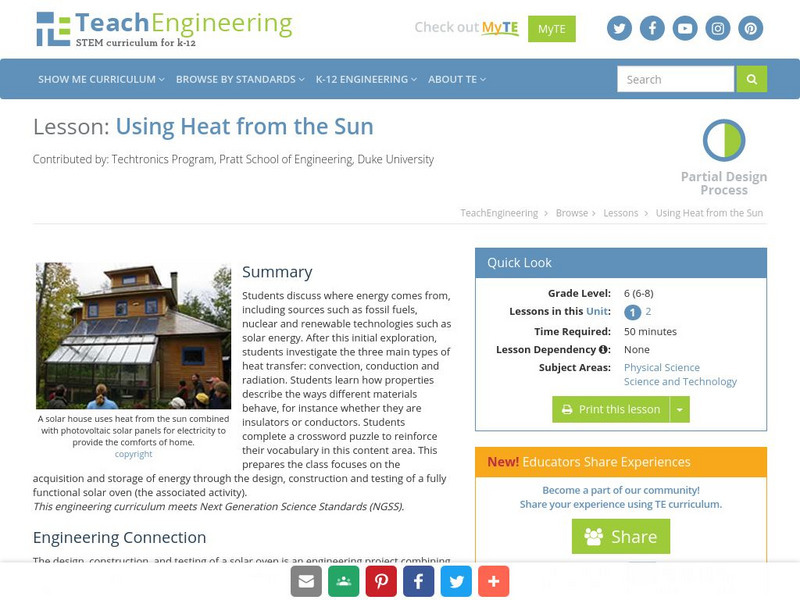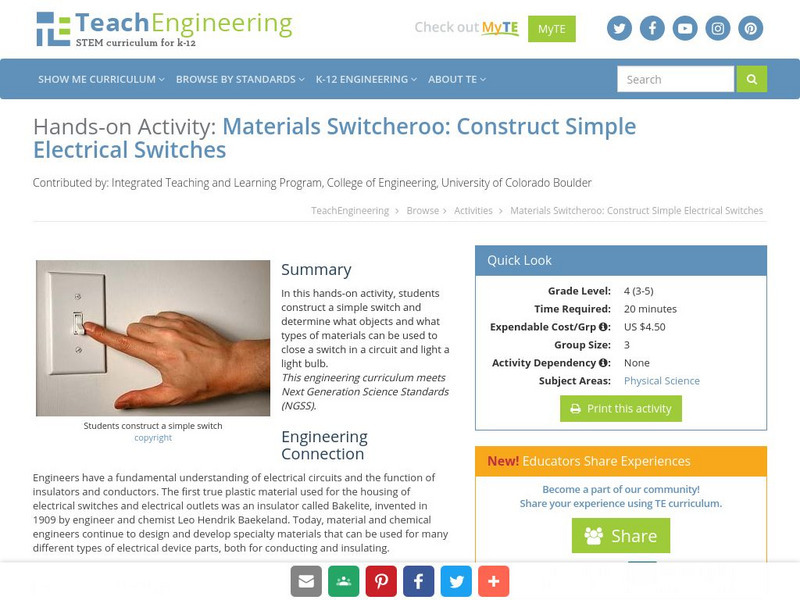Hi, what do you want to do?
TED Talks
Ted: Ted Ed: How an Igloo Keeps You Warm
If you ever find yourself stranded in the snowy Arctic, you're gonna need to know how to build an igloo. But how can building a house made of ice keep you warm? It's Okay To Be Smart explains. [5:16]
CK-12 Foundation
Ck 12: Earth Science: Greenhouse Effect
[Free Registration/Login may be required to access all resource tools.] Explains the greenhouse effect and how humans affect the greenhouse gas level.
CK-12 Foundation
Ck 12: Earth Science: Greenhouse Effect
[Free Registration/Login may be required to access all resource tools.] Describes different greenhouse gases and how human actions impact the greenhouse effect.
Science Buddies
Science Buddies: Which Materials Are the Best Conductors?
There are two main types of materials when it comes to electricity, conductors, and insulators. What are they made of? Find out by testing different materials in a circuit to see which ones conduct the most electricity.
Science Education Resource Center at Carleton College
Serc: Mn Step: What's the Coolest?
This is an investigation into how to insulate something so that it stays frozen. Students will experiment with different materials to try to create the best cooler. They will then follow a procedure to make ice-cream, and learn about the...
ClassFlow
Class Flow: Turning on the Lights
[Free Registration/Login Required] In this lesson students learn the parts of a circuit, build series and parallel circuits, learn about insulators and conductors, and more in this interactive multimedia flipchart.
ClassFlow
Class Flow: Circuit Conductors
[Free Registration/Login Required] This unit builds on children's previous practical experience of making circuits and extends their understanding of circuits, conductors and insulators and the need for a complete circuit in order for a...
ClassFlow
Class Flow: Keeping Warm
[Free Registration/Login Required] Through this unit children build their ideas about temperature as a measure of how hot or cold objects are and learn about thermal insulators as materials that can help to keep things warm or cool.
Science Buddies
Science Buddies: Roller Coaster Marbles: How Much Height to Loop the Loop?
This is a really fun project even if you don't like going on roller coasters yourself. You'll build a roller coaster track for marbles using foam pipe insulation and masking tape, and see how much of an initial drop is required to get...
Science Buddies
Science Buddies: Converting Potential Energy to Kinetic Energy
If you'd like to investigate the physics of amusement park rides, then this project is for you. You'll build a roller coaster track for marbles using foam pipe insulation and masking tape, and see how much the marble's potential energy...
TeachEngineering
Teach Engineering: Cooking With the Sun
Students learn about using renewable energy from the Sun for heating and cooking as they build and compare the performance of four solar cooker designs. They explore the concepts of insulation, reflection, absorption, conduction and...
TeachEngineering
Teach Engineering: Wimpy Radar Antenna
Students will reinforce an antenna tower made from foam insulation, so that it will withstand a 480 N-cm bending moment (torque) and a 280 N-cm twisting moment (torque) with minimal deflection. One class will be used to discuss the...
TeachEngineering
Teach Engineering: Put a Spark in It! Electricity
Uncountable times every day "with the merest flick of a finger"each one of us calls on electricity to do our bidding. What would your life be like without electricity? Students begin learning about electricity with an introduction to the...
TeachEngineering
Teach Engineering: Energy
Through nine lessons, students are introduced to a range of energy types--electrical, light, sound and thermal-as well as the renewable energy sources of wind, hydro (water) and solar power. Subjects range from understanding that the...
TeachEngineering
Teach Engineering: Using Heat From the Sun
In this lesson, students will first discuss where energy comes from, including sources such as fossil fuels, nuclear, and such renewable technologies as solar. After this initial exploration, students will investigate the three main...
NASA
Nasa: Rockets Educator Guide: Foam Rocket
This lesson plan shows students how to construct a rocket using pipe insulating foam. Students will investigate the relationship between launch angle and range when launching their rockets powered by rubber bands.
Other
The Green Guide
The Green Guide offers environmental advice with regard to home and garden, travel and transportation, and food. For example, find ways that you can make over your living room, or add home insulation, or buy a television the green way.
State Energy Conservation Office-Texas
State Energy Conservation Office: Energy Conservation in the Home [Pdf]
Looks at how energy is used in a home, and strategies in construction, choice of appliances, etc. for minimizing waste.
Canada Science and Technology Museum
Canada Science and Technology Museum: Background Information for Electricity
The Canada Science and Technology Museum answers some of the most common questions about electricity. For example, get the definition of electricity, the difference between alternating and direct currents, and learn how a fuse works.
OpenStax
Open Stax: College Physics: Conduction
In this section of the textbook, learn about how heat is transferred by conduction. Section explores how to calculate thermal conductivity and studies the thermal conductivities of common substances. Also included are problems with...
TeachEngineering
Teach Engineering: Build a Charge Detector
In this hands-on activity, students explore the electrical force that takes place between two objects. Each student builds an electroscope and uses the device to draw conclusions about objects' charge intensity. Students also determine...
TeachEngineering
Teach Engineering: Will It Conduct?
Students build their own simple conductivity tester and explore whether given solid materials and solutions are good conductors of electricity.
TeachEngineering
Teach Engineering: Switcheroo
In this hands-on activity, students construct a simple switch and determine what objects and what types of materials can be used to close a switch in a circuit and light a light bulb.
TeachEngineering
Teach Engineering: Temperature Tells All!
Students are introduced to the health risks caused by cooking and heating with inefficient cook stoves inside homes, a common practice in rural developing communities. Students simulate the cook stove scenario and use the engineering...
Other popular searches
- Conductors and Insulators
- Conductors Insulators
- Conductor Insulators
- Thermal Insulators
- Best Insulators
- Science Thermal Insulators
- Heat Insulators
- Water Temperature Insulators
- Conductors Insulators Heat
- Insulators Ice Cube
- Good Insulators
- Conductor and Insulators





